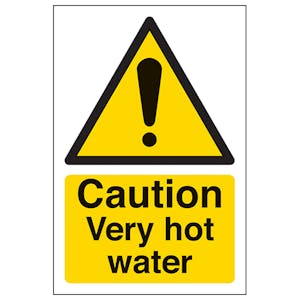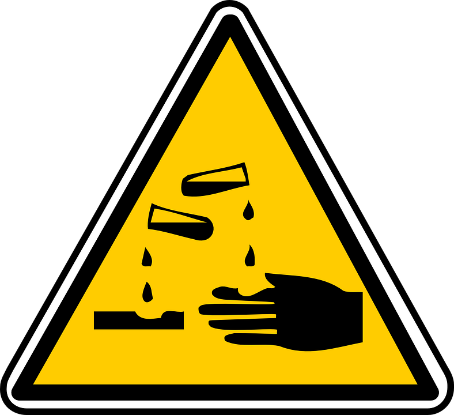Choosing the Right Safety Signage: Key Elements for Workplace Safety Success
Choosing the Right Safety Signage: Key Elements for Workplace Safety Success
Blog Article
Kinds of Safety Indicators You Required to Know for Ultimate Protection

Warning Signs
Caution indicators play a vital duty in making sure safety and security by conveying crucial details about prospective threats. These signs are vital in various environments, including work environments, public locations, and roadways, where they notify individuals to dangers that might not be immediately visible. Typical examples of caution indicators consist of those showing unsafe surface areas, electrical threats, and low overhead clearance.

It is important for organizations to routinely assess the placement and presence of caution indications to ensure they properly connect threats. Educating workers and the public on the meanings of these signs better enhances their value in promoting safety and security society - Safety Signage.
Restriction Indicators
Prohibition signs act as crucial signs made to connect limitations and actions that ought to be stayed clear of in certain areas. These indications are essential for making certain safety and conformity, helping to avoid mishaps and mitigate threats in different settings, including workplaces, public locations, and construction websites. Typically identified by a strong red circle with a diagonal line, restriction signs communicate a clear message that certain actions are not allowed.
Typical instances include indicators that restrict smoking cigarettes, eating, or access into limited locations. The efficiency of these indicators depends upon their exposure and simpleness, making it simple for people to understand the designated message at a look. Proper placement is crucial; they ought to be situated in high-traffic areas and near the factors of potential offense to make best use of recognition.
Prohibition indications not just shield individuals however likewise copyright organizational plans and lawful needs (Safety Signage). Their usage fosters a culture of security and regard for regulations, contributing to a much safer atmosphere for every person. Subsequently, understanding and adhering to the directives of prohibition indications is critical to ensure compliance and promote general security in any type of provided area.
Mandatory Signs
Mandatory signs are essential components of safety and security interaction, made to educate people of actions that should be taken to ensure safety and conformity in different atmospheres. These signs are identified by their distinct blue background and white symbols or message, conveying clear guidelines that have to be complied with.
Typical examples of mandatory indicators include directives such as "Put On Individual Protective Equipment" (PPE), "Use Hearing Protection," and "Should Clean Hands." Each of these indicators serves a specific function, targeting habits that enhance safety and alleviate dangers in offices, public centers, and construction websites.
The relevance of obligatory indicators can not be overstated; they not only aid in avoiding accidents and injuries but additionally guarantee adherence to business policies and lawful policies. In settings where risks prevail, the presence of these indicators reinforces a society of safety and security and responsibility amongst all individuals.
To optimize their performance, necessary signs ought to be positioned in visible places, guaranteeing they are easily seen and comprehended by every person around - Safety Signage. Regularly examining and preserving these indications is likewise important to ensure their clearness and presence, hence promoting a more secure environment for all
Emergency Details Indications
Emergency situation details signs play an important duty in guiding individuals during situations, providing important info that can aid guarantee safety and security and facilitate effective reaction actions. These indications are created to supply immediate and clear guidelines in emergency situations, such as fires, chemical spills, or all-natural disasters.
Generally, emergency information signs include crucial information such as emptying paths, emergency situation contact numbers, locations of very first aid stations, and directions for using emergency situation equipment, such as fire extinguishers or defibrillators. Their layout often includes vibrant colors, high contrast, and widely identifiable signs to guarantee visibility web and understanding even in high-stress situations.
It is necessary for companies to consistently assess and upgrade their emergency details indications to mirror any kind websites of changes in building formats, emergency treatments, or get in touch with details. Proper positioning of these indications is just as crucial; they should be placed in areas with high foot website traffic and at eye level to ensure that they are conveniently noticeable during emergencies.
Standard and Directional Indicators
Guideline and directional indications are important devices for navigation within various settings, guaranteeing that people can find their method efficiently and safely. These indicators serve an important function in both exclusive and public spaces, consisting of offices, medical facilities, institutions, and entertainment areas.
Commonly featuring arrows, signs, or message, guideline and directional signs supply clear guidelines on browsing complex designs. They aid prevent confusion and reduce the danger of crashes by routing individuals towards departures, bathrooms, and details factors of interest. Effective signage is developed to be quickly well-known, usually utilizing standardized colors and shapes to convey information rapidly.
Along with helping navigation, these indications play a crucial duty in emergency situation readiness. Throughout dilemmas, well-placed directional indications can lead people to security, minimizing panic and making certain organized evacuations. Routine upkeep and updates to these signs are crucial, as changing formats or brand-new threats might require modified assistance.
Conclusion

Understanding the differences between caution indications, prohibition indicators, compulsory signs, and emergency situation info signs can dramatically improve overall safety and security understanding.Warning indications play an important function in making certain security by sharing important information regarding prospective dangers. link These indicators are critical for ensuring safety and compliance, helping to avoid mishaps and alleviate dangers in different atmospheres, consisting of work environments, public locations, and building websites. During dilemmas, well-placed directional indications can lead people to safety, minimizing panic and ensuring orderly emptyings. Caution signs, restriction indicators, mandatory indications, and emergency situation details and directional signs each serve distinctive purposes in conveying crucial details regarding risks, constraints, safety and security actions, and navigational assistance.
Report this page